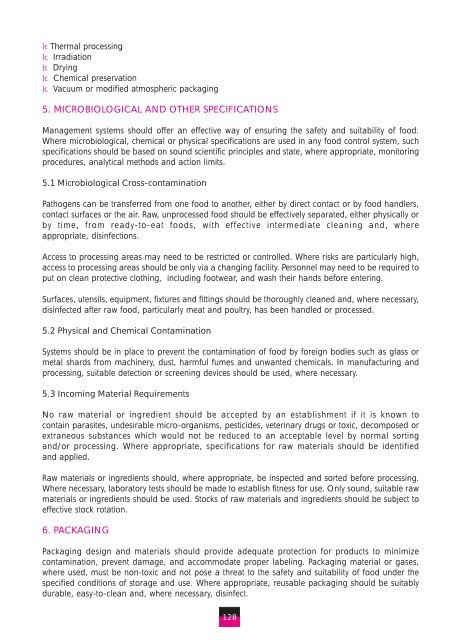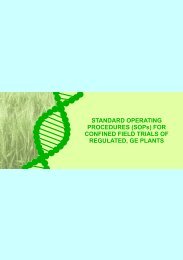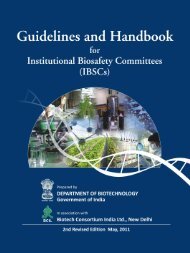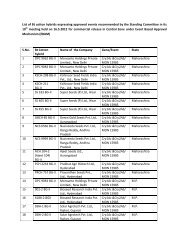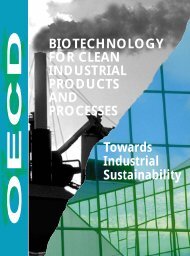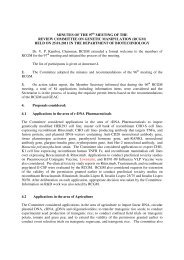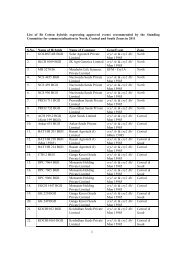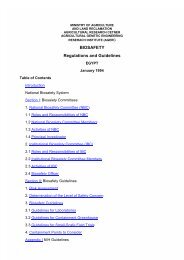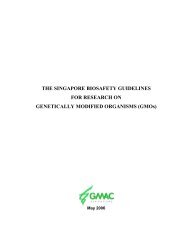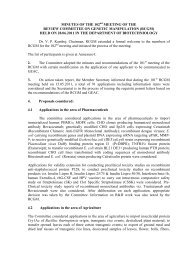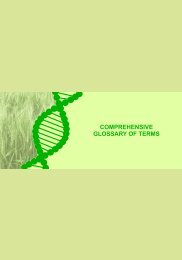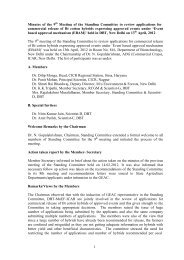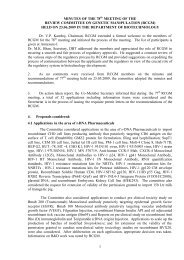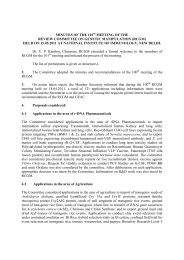THE USER'S MANUAL ON CODEX - Department of Biotechnology
THE USER'S MANUAL ON CODEX - Department of Biotechnology
THE USER'S MANUAL ON CODEX - Department of Biotechnology
You also want an ePaper? Increase the reach of your titles
YUMPU automatically turns print PDFs into web optimized ePapers that Google loves.
k Thermal processing<br />
k Irradiation<br />
k Drying<br />
k Chemical preservation<br />
k Vacuum or modified atmospheric packaging<br />
5. MICROBIOLOGICAL AND O<strong>THE</strong>R SPECIFICATI<strong>ON</strong>S<br />
Management systems should <strong>of</strong>fer an effective way <strong>of</strong> ensuring the safety and suitability <strong>of</strong> food.<br />
Where microbiological, chemical or physical specifications are used in any food control system, such<br />
specifications should be based on sound scientific principles and state, where appropriate, monitoring<br />
procedures, analytical methods and action limits.<br />
5.1 Microbiological Cross-contamination<br />
Pathogens can be transferred from one food to another, either by direct contact or by food handlers,<br />
contact surfaces or the air. Raw, unprocessed food should be effectively separated, either physically or<br />
by time, from ready-to-eat foods, with effective intermediate cleaning and, where<br />
appropriate, disinfections.<br />
Access to processing areas may need to be restricted or controlled. Where risks are particularly high,<br />
access to processing areas should be only via a changing facility. Personnel may need to be required to<br />
put on clean protective clothing, including footwear, and wash their hands before entering.<br />
Surfaces, utensils, equipment, fixtures and fittings should be thoroughly cleaned and, where necessary,<br />
disinfected after raw food, particularly meat and poultry, has been handled or processed.<br />
5.2 Physical and Chemical Contamination<br />
Systems should be in place to prevent the contamination <strong>of</strong> food by foreign bodies such as glass or<br />
metal shards from machinery, dust, harmful fumes and unwanted chemicals. In manufacturing and<br />
processing, suitable detection or screening devices should be used, where necessary.<br />
5.3 Incoming Material Requirements<br />
No raw material or ingredient should be accepted by an establishment if it is known to<br />
contain parasites, undesirable micro-organisms, pesticides, veterinary drugs or toxic, decomposed or<br />
extraneous substances which would not be reduced to an acceptable level by normal sorting<br />
and/or processing. Where appropriate, specifications for raw materials should be identified<br />
and applied.<br />
Raw materials or ingredients should, where appropriate, be inspected and sorted before processing.<br />
Where necessary, laboratory tests should be made to establish fitness for use. Only sound, suitable raw<br />
materials or ingredients should be used. Stocks <strong>of</strong> raw materials and ingredients should be subject to<br />
effective stock rotation.<br />
6. PACKAGING<br />
Packaging design and materials should provide adequate protection for products to minimize<br />
contamination, prevent damage, and accommodate proper labeling. Packaging material or gases,<br />
where used, must be non-toxic and not pose a threat to the safety and suitability <strong>of</strong> food under the<br />
specified conditions <strong>of</strong> storage and use. Where appropriate, reusable packaging should be suitably<br />
durable, easy-to-clean and, where necessary, disinfect.<br />
128


